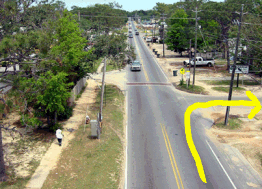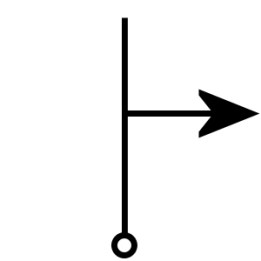what is a tulip diagram?
A tulip diagram is a pictorial representation of a navigation instruction in a dual sport roll chart or rally roadbook depicting an intersection or a segment of road usually made up of a ball and arrow schematic. It may also include objects in sight of the road that can serve as navigational references. The ball at the base of the tulip denotes the point one will enter the intersection or road segment and the arrowhead shows the direction out of the intersection or away from the road segment. Tulip diagrams only approximate the configuration of roads and intersections as they appear upon approach, only including enough details to enable identification of the location.


Tulip diagrams are named after the Tulip Rally (Tulpen rally) in Holland where the format was first used in the 1950's.
The aerial photograph to the right shows an intersection with a main road and a side street to the right which we wish to direct riders to take, as shown by the yellow arrow. Below the aerial photograph is the tulip diagram used to represent this turn instruction. The large ball or dot at the bottom of the diagram shows the point where one approaches the junction from, and the arrowhead shows the direction one is to take to exit the road segment or intersection.